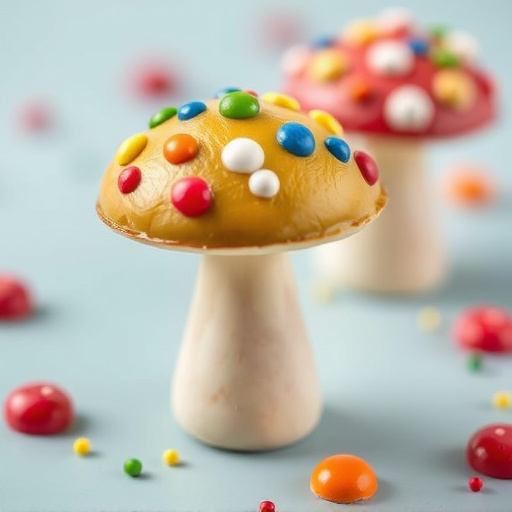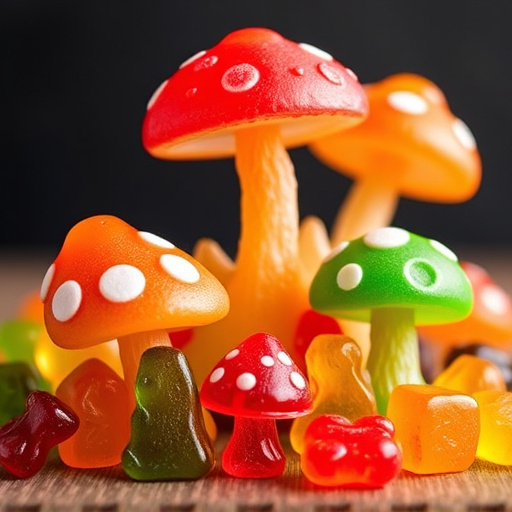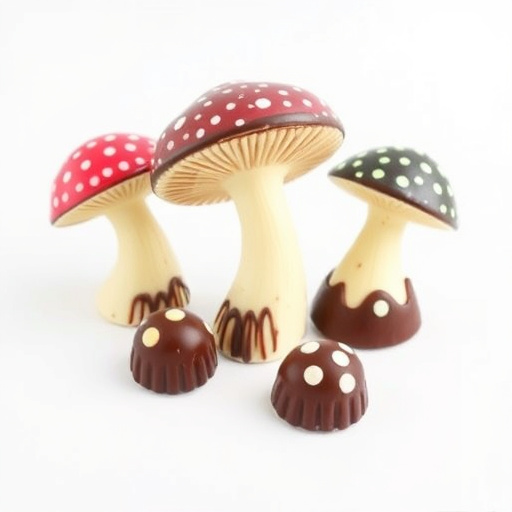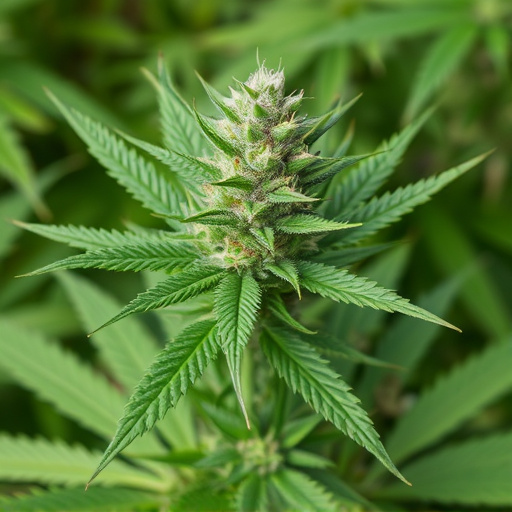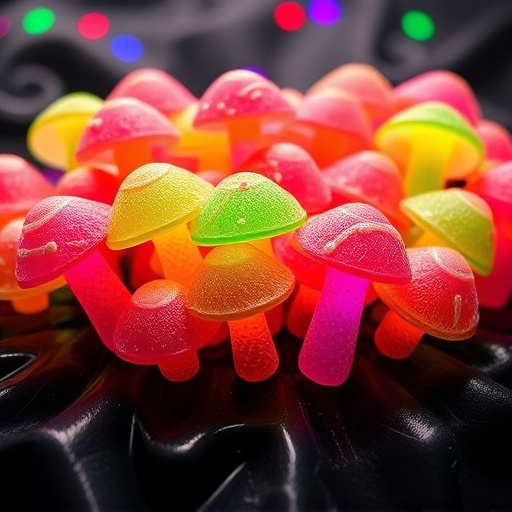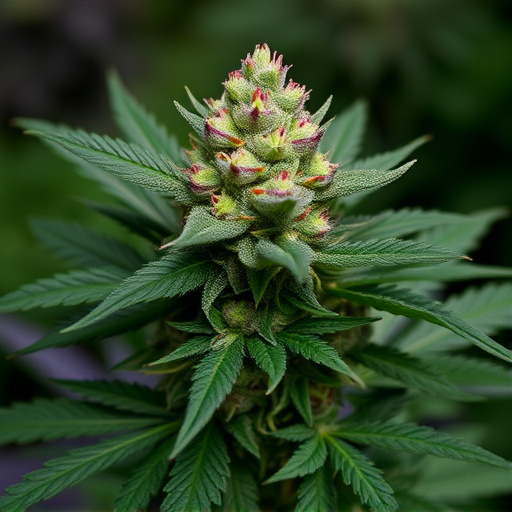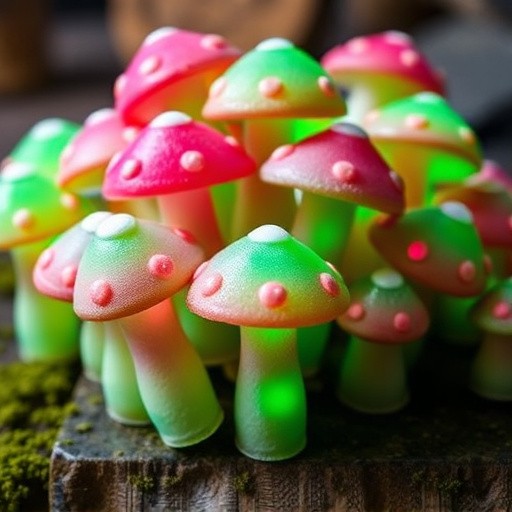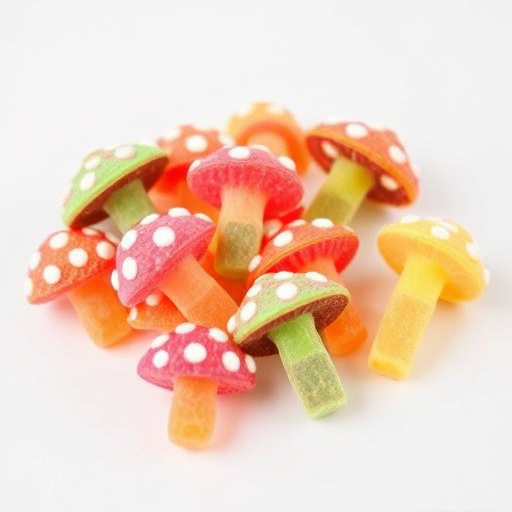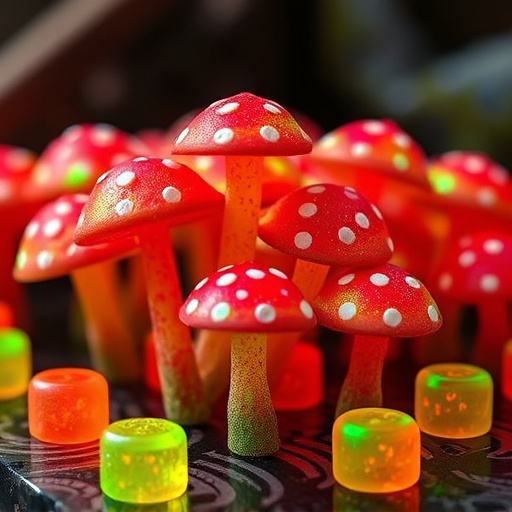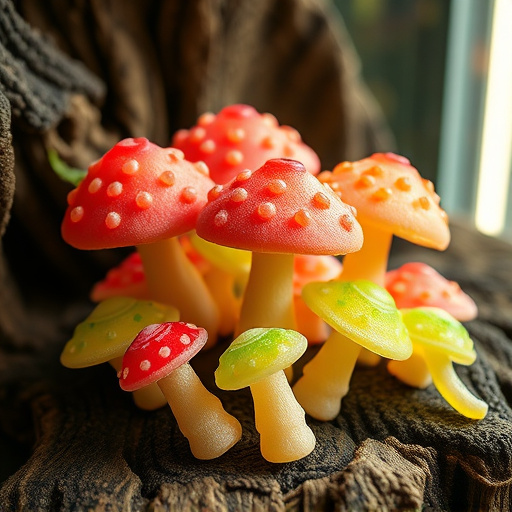The history of magic mushroom gummies stretches back centuries, with indigenous cultures globally using psychedelic mushrooms for healing and spiritual connection. In the 20th century, Western psychology research explored these compounds, gaining prominence in the 1960s counterculture movement. Today, as legalities shift, magic mushroom gummies are reemerging as a modern, discreet way to access potential therapeutic benefits like enhanced creativity, improved mood, and reduced anxiety for conditions such as depression, PTSD, and addiction. However, responsible usage is crucial due to risks including intense psychological reactions and long-term adverse effects.
“Unraveling the strongest magic mushroom gummies effects involves a fascinating journey through time and science. This article delves into the historical look at magic mushroom gummies usage, dating back centuries, where indigenous cultures utilized their therapeutic properties. We explore the modern scientific understanding of these mushrooms’ mind-altering effects, their potential benefits ranging from mental health treatments to creative enhancement.
Additionally, we weigh the risks and consider why, despite their allure, magic mushroom gummies should be approached with caution, especially regarding dosage and legal considerations.”
- A Historical Look at Magic Mushroom Gummies Usage
- The Science Behind Magic Mushrooms and Their Effects on the Mind
- Potential Benefits and Risks of Consuming Magic Mushroom Gummies
A Historical Look at Magic Mushroom Gummies Usage
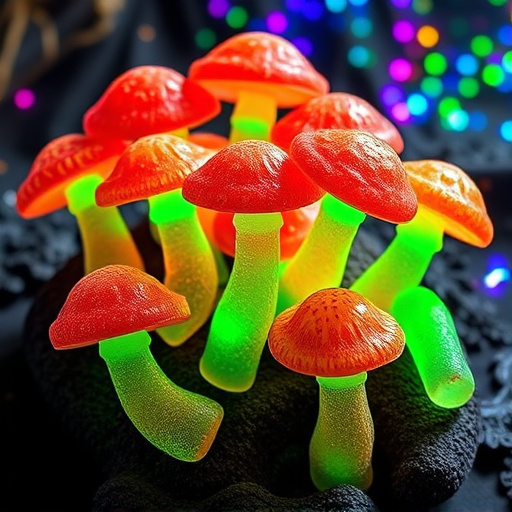
The history of magic mushroom gummies usage stretches back centuries, intertwining with cultural practices and traditional medicine worldwide. These small, edible treats, derived from psychedelic mushrooms like Psilocybe cubensis, have been a subject of fascination for indigenous communities who recognized their medicinal properties long before modern science. Traditional use varies across cultures, with some tribes incorporating them into rituals for spiritual connection, healing, and seeking insights.
Ancient texts hint at the practice of consuming mushroom-infused foods, suggesting their enduring appeal throughout history. As time progressed, the West began to explore these compounds in the 20th century, primarily within psychological research. The 1960s counterculture movement brought psychedelic mushrooms, and by extension, gummies, into the mainstream, sparking both interest and controversy. Today, with evolving legal landscapes, magic mushroom gummies are gaining popularity again, this time as a modern, discreet way to explore their therapeutic benefits.
The Science Behind Magic Mushrooms and Their Effects on the Mind
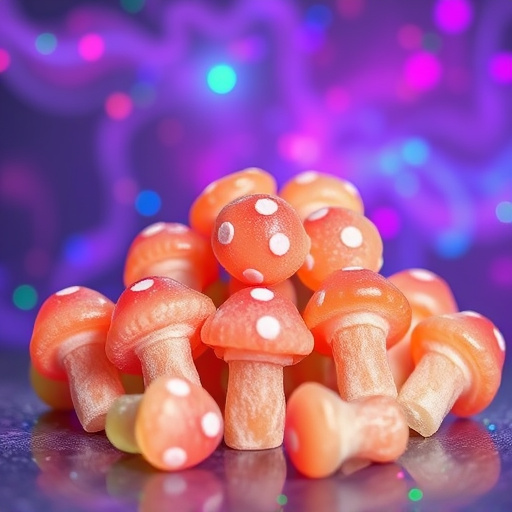
Magic mushrooms have a rich history dating back centuries, with indigenous cultures around the globe utilizing them for medicinal and spiritual purposes. The active compounds within these fungi, primarily psilocybin and psilocin, are known to interact with the brain’s serotonin receptors, triggering altered states of consciousness. Modern science has begun to uncover the potential therapeutic benefits of these compounds, leading to increased interest in their application for mental health conditions such as depression, anxiety, and PTSD.
Recent research suggests that the effects of magic mushrooms go beyond mere alteration of perception. They have been shown to facilitate profound personal insights, enhance creativity, and promote emotional well-being. The history of Magic Mushroom Gummies usage is an extension of this cultural and scientific interest, offering a modern and accessible way to explore these compounds’ potential benefits while minimizing potential risks associated with traditional ingestion methods.
Potential Benefits and Risks of Consuming Magic Mushroom Gummies
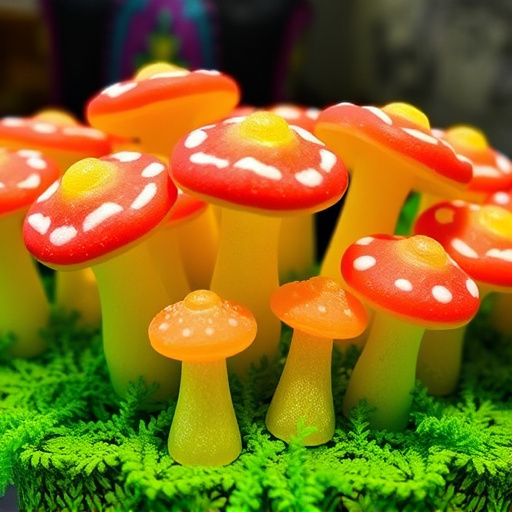
The history of magic mushroom gummies usage dates back centuries, with indigenous cultures utilizing psilocybin mushrooms for their medicinal and spiritual properties. However, modern interest in these substances has grown significantly, leading to the creation of edible forms like gummies. Magic mushroom gummies offer a convenient and discreet way to experience potential therapeutic benefits associated with psilocybin, such as enhanced creativity, improved mood, and reduced anxiety. They are often marketed as an alternative or adjunctive treatment for conditions like depression, PTSD, and addiction.
Despite their promising effects, consuming magic mushroom gummies also carries risks. Psilocybin can induce intense psychological reactions, including hallucinations and altered perceptions, which may be unsettling for some individuals. Long-term use or high doses can lead to adverse effects such as anxiety, paranoia, or even psychotic episodes. It’s crucial to approach these substances with caution, especially considering the limited scientific research on their long-term impacts. Responsible usage involves starting with low doses and gradually increasing under professional guidance, if possible.
In light of the historical usage of magic mushroom gummies stretching back decades and the growing interest in their modern applications, it’s clear these treats have captured the curiosity of many. The science behind them reveals a complex interplay between compounds like psilocybin and the mind, offering potential therapeutic benefits for conditions such as depression and anxiety. However, it’s crucial to remember that magic mushroom gummies carry risks, including unpredictable effects and safety concerns. As with any substance, informed consent and responsible usage are paramount. The future of magic mushroom-based treatments looks promising, but continued research is needed to fully understand their complexities.
